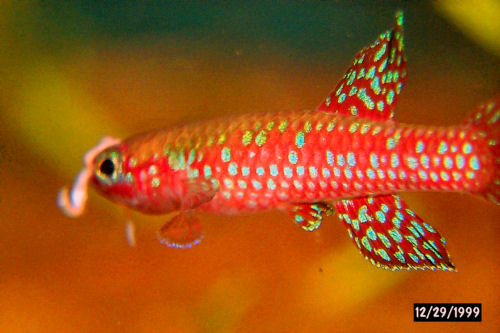References:
White Worms
Enchytraeus albidus as a Live Feed and in Formulated Aquafeeds
By Michelle L. Walsh
http://www.researchgate.net/publication/259215387_Potential_of_white_worms_Enchytraeus_albidus_as_a_component_for_aquaculture_and_stock_enhancement_feeds/
Production and nutritional composition of white worms Enchytraeus albidus fed different low-cost feeds
Elizabeth A.Fairchilda, Alexis M.Bergman, Jesse T.Trushenski - http://doi.org/10.1016/j.aquaculture.2017.08.019
http://www.sciencedirect.com/science/article/abs/pii/S0044848617307366
Ivleva, I.V. 1973. Mass Cultivation of Invertebrates: Biology and
Methods. Israel Programme for Scientific Translations, Jerusalem,
Israel.
Klein-MacPhee, G. 1978. Synopsis of biological data for the winter
flounder, Pseudopleuronectes americanus (Walbaum), NOAA
Techical Report 414.
Memis, D., M. S. Celikkale and E. Ercan. 2004. The effect of different
diets on the white worm (Enchytraeus albidus Henle, 1837)
reproduction. Turkish Journal of Fisheries and Aquatic Sciences 4:5-
7.
Springett, J.A. 1964. A method for culturing Enchytraeidae. Oikos
15:175-177.
Vedrasco, A., V. Lobchenko, I. Pirtu and R. Billard. 2002. The culture
of live food for sturgeon juveniles, a mini review of the Russian
literature. International Review of Hydrobiology 87:569-575.
Walsh, M.L. 2012. Examining conditioning strategies for flatfish
stock enhancement to promote feeding success. Ph.D. dissertation,
University of New Hampshire, Durham, NH, USA.
Römbke J. (1989) Enchytraeus albidus (Enchytraeidae, Oligochaeta) as a Test Organism in Terrestrial Laboratory Systems.
In: Chambers P.L., Chambers C.M., Greim H. (eds) Biological Monitoring of Exposure and the Response at the Subcellular Level to Toxic Substances. Archives of Toxicology, vol 13. Springer, Berlin, Heidelberg
http://link.springer.com/chapter/10.1007/978-3-642-74117-3_79
You ain't gonna believe this. They can withstand freezing, are found it the Arctic and if you add salt they can survive even lower temperatures.
Tell me that's not weird.
Soil salinity increases survival of freezing in the enchytraeid Enchytraeus albidus
A. L. Patrício Silva, M. Holmstrup, V. Kostal, M. J. B. Amorim
Journal of Experimental Biology 2013 216: 2732-2740; doi: 10.1242/jeb.083238
Enchytraeus albidus is a freeze-tolerant enchytraeid found in diverse habitats, ranging from supralittoral to terrestrial and spanning temperate to arctic regions. Its freeze tolerance is well known but the effect of salinity in this strategy is still poorly understood. We therefore studied the combined effect of salinity (0, 15, 35, 50‰ NaCl) and sub-zero temperatures (−5, −14, −20°C) on the freeze tolerance of E. albidus collected from two distinct geographical regions (Greenland and Germany). A full factorial design was used to study survival, and physiological and biochemical end points. The effect of salinity on the reproduction of German E. albidus was also assessed. Exposure for 48 h to saline soils prior to cold exposure triggered an increase in osmolality and decrease in water content. Worms exposed to saline soils had an improved survival of freezing compared to worms frozen in non-saline soils, particularly at −20°C (survival more than doubled). Differential scanning calorimetry measurements showed that the fraction of water frozen at −5 and −14°C was lower in worms exposed to 35‰ NaCl than in control worms. The lowering of ice content by exposure to saline soils was probably the main explanation for the better freeze survival in saline-exposed worms. Glucose increased with decreasing temperature, but was lower in saline than in non-saline soils. Thus, glucose accumulation patterns did not explain differences in freeze survival. Overall, the physiological responses to freezing of E. albidus from Greenland and Germany were similar after exposure to saline soils. Soil salinity up to 30‰ improved reproduction by a factor of ca. 10.
http://jeb.biologists.org/content/216/14/2732.short
Cryobiology
Volume 57, Issue 3, December 2008, Pages 286-291
Freeze tolerance and accumulation of cryoprotectants in the enchytraeid Enchytraeus albidus (Oligochaeta) from Greenland and Europe
The freeze tolerance and accumulation of cryoprotectants was investigated in three geographically different populations of the enchytraeid Enchytraeus albidus (Oligochaeta). E. albidus is widely distributed from the high Arctic to temperate Western Europe. Our results show that E. albidus is freeze tolerant, with freeze tolerance varying extensively between Greenlandic and European populations. Two populations from sub Arctic (Nuuk) and high Arctic Greenland (Zackenberg) survived freezing at −15 °C, whereas only 30% of a German population survived this temperature. When frozen, E. albidus responded by catabolising glycogen to glucose, which likely acted as a cryoprotectant. The average glucose concentrations were similar in the three populations when worms were frozen at −2 °C, approximately 50 μg glucose mg−1 tissue dry weight (DW). At −14 °C the glucose concentrations increased to between 110 and 170 μg mg−1 DW in worms from Greenland. The average glycogen content of worms from Zackenberg and Nuuk were about 300 μg mg−1 DW, but only 230 μg mg−1 DW in worms from Germany showing that not all glycogen was catabolised during the experiment. Nuclear magnetic resonance spectrometry (NMR) was used to screen for other putative cryoprotectants. Proline, glutamine and alanine were up regulated in frozen worms at −2 °C but only in relatively small concentrations suggesting that they were of little significance for freeze survival. The present study confirms earlier reports that freeze tolerant enchytraeids, like other freeze tolerant oligochaete earthworms, accumulate high concentrations of glucose as a primary cryoprotectant.
https://www.sciencedirect.com/science/article/pii/S0011224008001429

